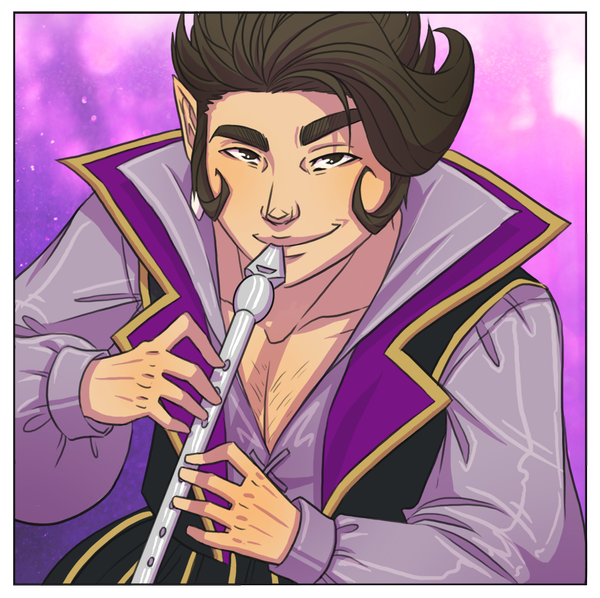I am a huge fan of RPGs. Like actual Role Playing Games, though now typically referred to as Tabletop RPGs or Pen and Paper RPGs. I haven’t been playing for too long, being introduced with the release of the fifth edition of Dungeons and Dragons or D&D 5e, but it has thoroughly taken over my life. Being an aspiring game developer, I can’t help but come up with my own ideas for how certain mechanics should work or new ideas on less fleshed out mechanics. Dungeons and Dragons, while having a rule set, greatly encourages this type of behavior and a community of “homebrewing” has formed.
So I’d like to share a few of my ideas:
Level 20 Bard Features:
In D&D hitting Level 20 is a big deal. It means the campaign you and your friends have been playing for YEARS is finally coming to an end. It means your character has reached their maximum potential. It means your characters are some of the most powerful things in the world. It means you should have some dope ass abilities!
Unfortunately for some classes the ability they’re granted at Level 20 is a bit… lackluster.
Superior Inspiration:

Art by Kit Buss of Critical Roll
“At 20th level, when you roll initiative and have no uses of Bardic Inspiration left, you regain one use.”
In laymen’s terms, every time you start a fight, if you’re out of “Bardic Inspiration” you gain one use of it. Bardic Inspiration is the bard’s special ability that can buff their allies. Increasing their chance to succeed at attacking or completing tasks. The bard can cast it a maximum of 5-6 times between rests. It’s a pretty powerful ability and while bards are not lacking in the power compartment, this being their ability at level 20 is butt. Don’t just take my word for it here are a few of D&D 5e’s level 20 Class features:
Signature Spells:
“When you reach 20th level, you gain mastery over two powerful spells and can cast them with little effort. Choose two 3rd-level wizard spells in your spellbook as your signature spells. You always have these spells prepared, they don’t count against the number of spells you have prepared, and you can cast each of them once at 3rd level without expending a spell slot. When you do so, you can’t do so again until you finish as short of long rest.”
Divine Intervention:
“Beginning at 10th level, you can call on your deity to intervene on your behalf when your need is great.
Imploring your deity’s aid requires you to use your action. Describe the assistance you seek, and roll percentile dice. If you roll a number equal to or lower than your cleric level, your deity intervenes…”
“At 20th level, your call for intervention succeeds automatically, no roll required.”
Like I said, when compared to those Superior Inspiration is lackluster. My idea involves solidifying the Bard’s role as the true Support class.
Mass Inspiration:
At 20th level, your Bardic Inspiration pool is doubled and with each use of the ability you can inspire up to 3 targets at once.

Image from Mad Max: Fury Road
This is no doubt more powerful than Superior Inspiration but balance is less important for TRPG’s than say your average video game as the DM knows how strong his players are and can simply make encounters more dangerous. All that really matters is how powerful your players feel. And being able to buff multiple allies at once and more often is significantly more exciting than recovering your pool slightly.
Archetype Based Level 20 Features:
The Paladin’s have a unique feature where their level 20 class feature is based on their class archetype. (sub-class) These are far and beyond my favorite as it makes it so you could have two paladins in your party and yet they would feel completely different from one another. So I’ve always liked to think about what archetype based level 20 class features I would make for each class. The two archetypes for bard are: College of Lore, a bard with a focus on learning and gathering information. And College of Valor, a bard with a focus on combat and celebrating heroes.
For College of Lore I would just insert Mass Inspiration as it has additional synergies with their Cutting Words and Peerless Skill features.
College of Valor: Superior Combat Inspiration

“Tactical Bard” by NIW
At your 20th Level your Combat Inspiration is improved:
– When a target uses your Inspiration on an attack roll the Inspiration Die is also added to damage dealt.
– When a target takes damage it can spend its Inspiration Die to reduce its damage by that much.
– When you kill a target you get a free Inspiration Die and a free action to cast it. Once per turn.
Wrap Up:
Remember, your job as DM is to make sure every player is engaged. Some enjoy the story telling aspects and some the gameplay. Either way I believe these variants give players more to work with.
If you ever run any games with a max level bard try it out for me and see how it feels. Or if you’re the player feel free to show this article to your GM to see how they feel about it. Either way shoot me a msg @STGHazard and let me know how it went.
Cover Image: “Thinkin Bout Kisses” by DaveRapoza
One comment on “TLC’s D&D 5e Homebrew: Level 20 Bard Features”
Comments are closed.

*–*